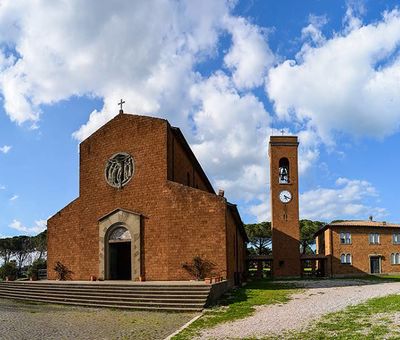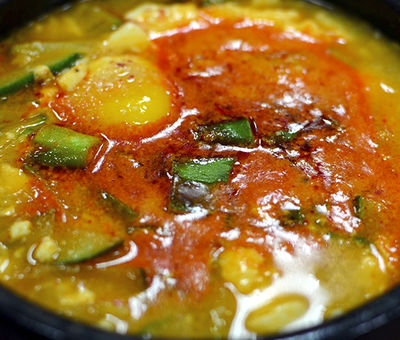Passing through town
The legends of Capalbio don’t stop abruptly on high, where the walls close in centuries of history, but they extend down to the valleys, where the people who live have little to do with “Little Athens”.
There’s a tiny hamlet along the main road you walk to arrive in the
medieval town – it’s called Borgo Carige. The only people who pass
through here are those who need to shop for specific items or use the small,
often-empty post office found in the main square. It was right in this square
that the story of my family began, a story inextricably linked to the Capalbio
culinary tradition. The hamlet of Borgo Carige came about in the 1950s,
with the aim of bringing together the residents of the surrounding countryside.
It was made up of just the parish church, the rectory, the social services
building and small shops, the day hospital and the post office – everything
revolved around a single square.
This small center was the soul of social life for those who received small
farms from the Ente Maremma land reform; they would arrive in town saddled up
on their bicycles, which were provided to them by the same body. In 1960, the
Ente Maremma director proposed that my grandparents open a restaurant in the social services building. My grandparents
accepted this and with that move began a long love story between my family and
food.
The first customers of the restaurant Da Decimo were workmen, and later the high-ranking hunters began joining them, thanks to the hunting tourist reserve nearby. The 1960s brought new prestige to our restaurant, thanks mainly to the proximity of Ansedonia and its wealthy residents. The cuisine prepared was steeped in authentic flavors, seasonal delicacies and well-hunted wild game: this combination was what led numerous customers to fall in love with my grandmother’s cooking.
The scent of acquacotta
Acquacotta, once upon a time, was a bountiful dish that relieved and nourished those who carried out heavy work. Over the years, this recipe has undergone variations and in the present day is the symbolic dish of Capalbio. Today, acquacotta is no longer just a dish for those who do manual labor: it’s become a fashionable dish that you absolutely must try if you visit the Maremma region.
For me, the scent of acquacotta provokes memories of a lively square, where in the summertime as children we’d play hide-and-seek between a Ferrari and a Mercedes parked in the center of town. Over time my grandmother turned this dish into her own personal “business card” of sorts, spreading the word – in times when people were generally less suspect – about the Capalbio culinary tradition to the halls of high society.
Those were the 1980s: now Da Decima no longer stands there and the scents in the square have since faded, but not much else has changed. The children still play hide-and-seek, the social services building still has its bar, restaurant and small shops. The post office is still around. A general calmness seeps into everything, and there’s hardly any difference between the various seasons lived out here. For many it could seem boring; for us, it means freedom.





